The math as I understand it is:- Dividing a frequency by N reduces the phase noise by 20log(N) dB - likewise multiplying by a factor of N (with a perfect frequency multiplier 🙂 ) increases the phase noise of the multiplied signal by 20log(N) dB.
Last edited:
Indeed, that's exactly what I wrote, or meant to write anyway. There is one nasty exception, though: when the phase noise is white (phase noise floor) and you divide the frequency, aliasing effects limit the reduction of the phase noise to 10 log10(N) dB rather than 20 log10(N) dB.
Hm.. Effectively, it would be enough to special order a 5,01 MHz crystal from Laptech, min quota, and use it coupled to some classic 5MHz oscillator..
But I'm afraid that some low noise/ phase noise amp would still be needed after the mixer for proper signal level.
The first question will be, how we do the mixer using:
. mini components as SHA-1 or TFM-2 or similar
. TFM-2, what I have build in the early 1990 and than stopped 🙁
. Chip based mixer as AD835 or else chip
. may use a master oscillator with low ppm with good PN and to get the mixing lower freq. with higher ppm.
. I mean at first let's look, whether for experimental, any stock freq. exists to mix into the audio range.
. the output must have some symmetric & asymmetric coax output and about in the 12..19dBm level rage
. my target is to have a low PN & distortion oscillator for reference

why not use a crystal oscillator and a frequency divider?
While dividing you will deal with digital signals and at the end filtering 2/3H content to death... to get the lovely LDO (low distortion oscillator without PN 😀
Hp
To get low distortion out of a mixer, you need a mixer with a high IP3, a low-distortion sine wave at the RF port, a good switching signal at the LO port, and a good low-pass filter to get rid of the sum product and the sums and differences with LO harmonics. It doesn't sound easier to me than dividing and filtering, while the close-in phase noise will be 57 dB worse when you go from 5 MHz to 10 kHz (20 dB*log10(500) because of the skipped division plus 10 dB*log10(2) because you have two oscillators contributing).
Greetings Marcel.
It's a pleasure to see you here on this thread.
Few years ago I followed some of your work on SOC design (40n). Very nice indeed.
Cheers.
/Alex
It's a pleasure to see you here on this thread.
Few years ago I followed some of your work on SOC design (40n). Very nice indeed.
Cheers.
/Alex
Last edited:
Hi Alex, I guess you are referring to some articles that had me as the umpteenth author? I helped a couple of students some years ago, but they should receive the credit for all the hard work and creativity. Especially Wenlong Jiang, he's an incredibly smart guy.
TWTMC-DRIXO Driscoll oscillator final measurements
After a few tweaking I attach the final phase noise measurements of the new Driscoll oscillator.
After a few tweaking I attach the final phase noise measurements of the new Driscoll oscillator.
Attachments
-
 Driscoll_final xo56448 vs 2x MTI 260 ocxo - shielded_Batteries_att6dB_1h.png140.8 KB · Views: 557
Driscoll_final xo56448 vs 2x MTI 260 ocxo - shielded_Batteries_att6dB_1h.png140.8 KB · Views: 557 -
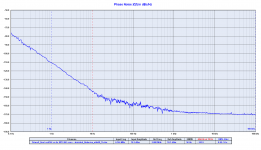 Driscoll_final xo6144 vs 2x MTI 260 ocxo - shielded_Batteries_att6dB_1h.png133.7 KB · Views: 548
Driscoll_final xo6144 vs 2x MTI 260 ocxo - shielded_Batteries_att6dB_1h.png133.7 KB · Views: 548 -
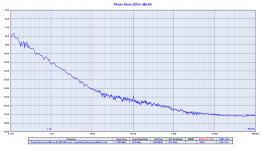 Driscoll_final xo11289 vs 2x MTI 260 ocxo - shielded_Batteries_att6dB_1h.png138.3 KB · Views: 524
Driscoll_final xo11289 vs 2x MTI 260 ocxo - shielded_Batteries_att6dB_1h.png138.3 KB · Views: 524 -
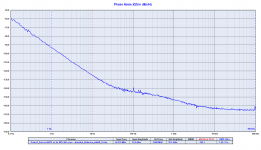 Driscoll_final xo22579 vs 2x MTI 260 ocxo - shielded_Batteries_att6dB_1h.png132.3 KB · Views: 506
Driscoll_final xo22579 vs 2x MTI 260 ocxo - shielded_Batteries_att6dB_1h.png132.3 KB · Views: 506 -
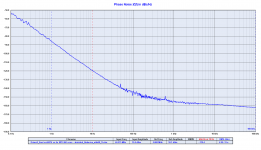 Driscoll_final xo24576 vs 2x MTI 260 ocxo - shielded_Batteries_att6dB_1h.png132.6 KB · Views: 503
Driscoll_final xo24576 vs 2x MTI 260 ocxo - shielded_Batteries_att6dB_1h.png132.6 KB · Views: 503
TWTMC-EXO Differential oscillator final measurements
I attach the phase noise plots of the new Differential oscillator.
I attach the phase noise plots of the new Differential oscillator.
Attachments
-
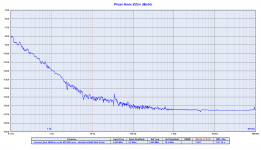 Everard_final 56448 xo vs 2x MTI 260 ocxo - shielded att6dB Batt 1h.png135.1 KB · Views: 302
Everard_final 56448 xo vs 2x MTI 260 ocxo - shielded att6dB Batt 1h.png135.1 KB · Views: 302 -
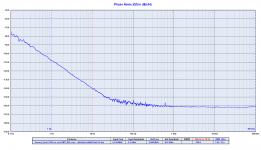 Everard_final 6144 xo vs 2x MTI 260 ocxo - shielded att6dB Batt 1h.png129.2 KB · Views: 288
Everard_final 6144 xo vs 2x MTI 260 ocxo - shielded att6dB Batt 1h.png129.2 KB · Views: 288 -
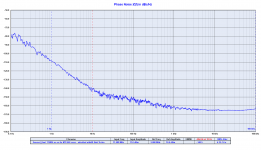 Everard_final 112896 xo vs 2x MTI 260 ocxo - shielded att6dB Batt 1h.png137.6 KB · Views: 260
Everard_final 112896 xo vs 2x MTI 260 ocxo - shielded att6dB Batt 1h.png137.6 KB · Views: 260 -
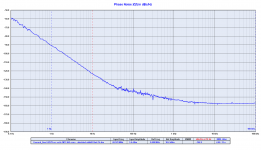 Everard_final 22579 xo vs 2x MTI 260 ocxo - shielded att6dB Batt 1h.png131.4 KB · Views: 247
Everard_final 22579 xo vs 2x MTI 260 ocxo - shielded att6dB Batt 1h.png131.4 KB · Views: 247
Looks great
At 5.6MHz the Driscoll and Differential appear to perform about the same.
How do we chose which to use for our application? I assume we look at the cost of the BOM for each and buy the most cost effective. From the pictures earlier it looked like the Differential is a much simpler design and therefore more cost effective. Am I on the right track?
At 5.6MHz the Driscoll and Differential appear to perform about the same.
How do we chose which to use for our application? I assume we look at the cost of the BOM for each and buy the most cost effective. From the pictures earlier it looked like the Differential is a much simpler design and therefore more cost effective. Am I on the right track?
The Differential has less parts than the Driscoll but more SMD to be soldered.
I suggest to wait for the Order form with final prices and the BOM for the various options (bare board, semi finished and finished board).
I will aslo publish a cost comparison spreadsheet.
I suggest to wait for the Order form with final prices and the BOM for the various options (bare board, semi finished and finished board).
I will aslo publish a cost comparison spreadsheet.
The Differential has less parts than the Driscoll but more SMD to be soldered.
I suggest to wait for the Order form with final prices and the BOM for the various options (bare board, semi finished and finished board).
I will aslo publish a cost comparison spreadsheet.
Amazing results, especially for the 5 / 6MHz oscillators, totally SOTA.
There is not much between the Dif and Driscoll, maybe Driscoll is just slightly better
- Are these without oven
- Which active device (BJT) did you use for differential?
cheers
TCD
Both oscillators are without oven, we have measured them with and without the oven and there are no appreciable differences, the phase noise plots are superimposable.
Of course there is a difference in Allan Deviation, but since we look for the best short term stability we have removed the oven to make the board easier to assemble.
In the Differential oscilaltor we have used the SSM2212.
We also have tried the SMBT3904 but the phase noise performance is worse.
Of course there is a difference in Allan Deviation, but since we look for the best short term stability we have removed the oven to make the board easier to assemble.
In the Differential oscilaltor we have used the SSM2212.
We also have tried the SMBT3904 but the phase noise performance is worse.
Sounds great Andrea.The Differential has less parts than the Driscoll but more SMD to be soldered.
I suggest to wait for the Order form with final prices and the BOM for the various options (bare board, semi finished and finished board).
I will aslo publish a cost comparison spreadsheet.
spare parts
Hi,
What is please the lasting of the crystals we have : AT-Cuts, SC-Cuts what ever the brand : are there losing their accuracicy by sliding too much after a while and noticeable enough at litening for wanting to swap them again ?
10 years, 20 years...40 years, or not impotant at all : it stays good enough ?
Hi,
What is please the lasting of the crystals we have : AT-Cuts, SC-Cuts what ever the brand : are there losing their accuracicy by sliding too much after a while and noticeable enough at litening for wanting to swap them again ?
10 years, 20 years...40 years, or not impotant at all : it stays good enough ?
... like a Barolo Le Rocche del Falletto ? 😀 ... so to be purchased by 6 !
Or like a 6 hours coocked beef at low temperature ? So one fork SC-Cut for the service + a Krisproll anhilator ? (this one was not a question )
Or like a 6 hours coocked beef at low temperature ? So one fork SC-Cut for the service + a Krisproll anhilator ? (this one was not a question )
Last edited:
Hi,
What is please the lasting of the crystals we have : AT-Cuts, SC-Cuts what ever the brand : are there losing their accuracicy by sliding too much after a while and noticeable enough at litening for wanting to swap them again ?
10 years, 20 years...40 years, or not impotant at all : it stays good enough ?
As said JosephK if there is not an eccessive drive level they will improve with time.
And they need some time before giving the best, that's the reason I suggest to never switch off the oscillators.
- Status
- Not open for further replies.
- Home
- Source & Line
- Digital Line Level
- The Well Tempered Master Clock - Building a low phase noise/jitter crystal oscillator